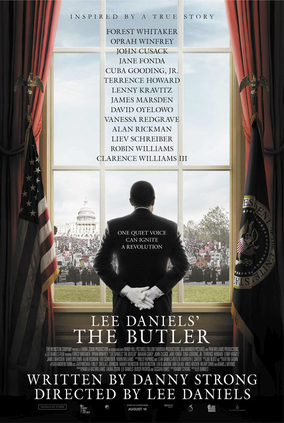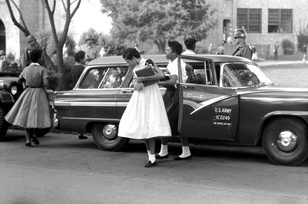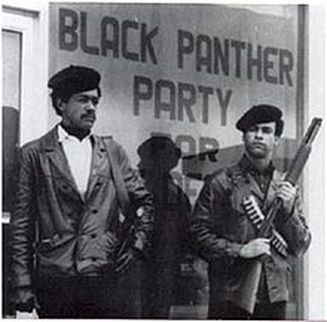
The viewer finds oneself repeatedly asking “Is that___?” or exclaiming “Oh, wow! That’s ___!” and it happens right from the beginning scenes. Mariah Carey appears (and disappears) early on to be followed in rapid succession by (Oh, wow! That’s…) Vanessa Redgrave, (Hey! That’s Linc from the Mod Squad!) Clarence Williams III, Oprah Winfrey, Cuba Gooding Jr., Lenny Kravitz, Terrence Howard, (Are you kidding me? He’s…) Robin Williams as Eisenhower, John Cusack as Nixon, James Marsden as JFK, Live Schreiber as LBJ, and Alan Rickman and Jane Fonda as Ronald and Nancy Reagan.
A quick word of advice before viewing: don’t get caught up in the many, many actors and how much they do or do not look like the figures they are portraying. Truth be told, none of them look like the characters, but they do feel like them.
The story itself is an amazing portrayal of a man of integrity “keeping his place” in the face of unspeakable bigotry and stupidity. Well, let’s just go ahead and call it what it is, evil. While it is based on the life of Eugene Allen (the movie character is called Cecil Gaines), who served eight administrations in the White House, the story is largely fictional in order to tell a much wider story.
 The Little Rock 9 protected by federal troops
The Little Rock 9 protected by federal troops After the anger at seeing the murder of those noble non-violent civil rights leaders like Dr. King and Malcolm X (who had abandoned the “by any means necessary” ideology), it surely must have seemed that violent struggle was the only option for bringing success in the cause. Some, in fact, did turn to a more violent response in the form of Black Power as espoused by the Black Panther movement. It was a movement born of frustration and disappointment. If equality would not be granted in a capitalist democracy, then a forced-equality of Marxist social theory was the next step.

Oprah Winfrey is convincing in her role as a wife and mother caught in the struggle between husband and son as well as her own fight with alcoholism and infidelity.
Lee Daniels’ vision and his attention to historical detail are impressive and inspiring. Not only does he show the determined resistance of the African-American fighters for equal rights but he also shows the equally indignant and determined white resisters who suffer the same humiliation alongside their African-American brothers and sisters. In one scene, Daniels’ shows the black and white protestors seated together at a Woolworth’s lunch counter assigned for “Whites only” and both are treated with equal vitriol and humiliation. Scenes like this, Lenny Kravitz says, are “hard to watch but important to remember.” Indeed the imagery of snarling dogs and fire-hoses, white-hooded Klansmen and Molotov cocktails, and the lynchings and the lynchings and the lynchings are unbearable. Yet, we must not forget even to “white America’s” shame.
The support or antagonism of various presidents are also shown through anguishing snapshots throughout Mr. Gaines’ career—from Eisenhower dispatching federal troops to Little Rock in 1957 to Reagan’s refusal to enact sanctions against South Africa’s apartheid government. We see JFK doing the right thing for the right reason, LBJ doing the right thing for the wrong reason and Nixon just doing wrong.
What Lee Daniels’ The Butler truly reveals to us is that African-American history is one and the same with American history; that “white history” and “black history” are twin strands of the double-helix that shapes our national DNA. The struggles for black identity are face to face with the trials for white identity. We are defined in the reflection we see in each other’s eyes.
In Lee Daniels’ vision, we can only see ourselves and each other clearly through honesty and self-examination.
This site and the material contained herein is protected by copyright and trademark laws under U.S. and International law. No part may be copied without written permission of the author.
© copyright 2011-2013. Travis Rogers, Jr. All rights reserved.
 RSS Feed
RSS Feed
